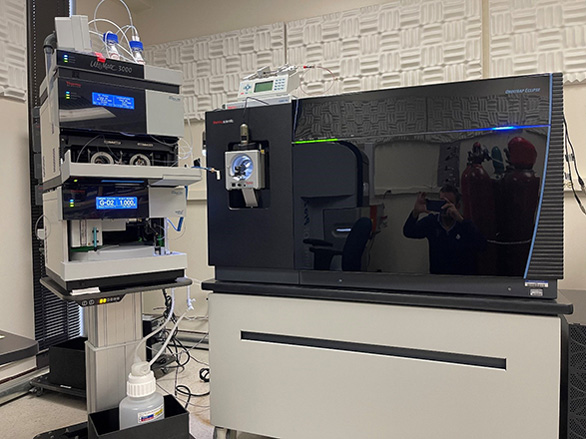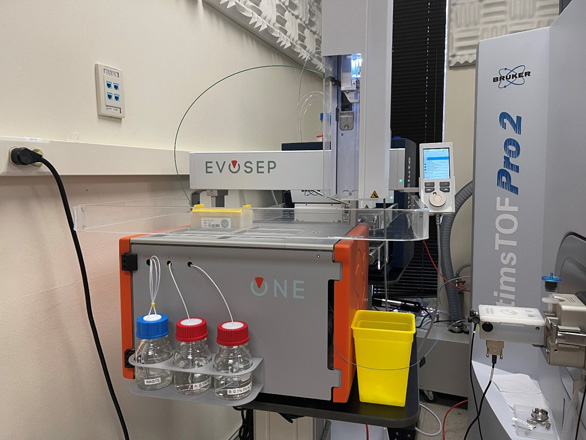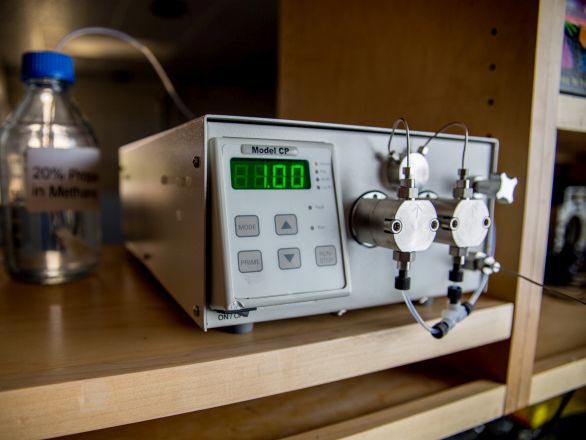Enzymatic protein digestion
Before being analyzed by mass spec, most proteins must be broken into smaller fragments. This is accomplished by digestion with a protease, usually trypsin and Lys-C, but may be another proteases of your choice.
Requirements
>100 fmol protein, may be a protein in solution, a gel slice or spot that is visible by coomassie staining.
Liquid chromatography/mass spectrometry (LC/MS)
- Thermo Scientific Orbitrap Eclipse with ETD, coupled to a Thermo Ultimate 3000 nanoLC system.
- Bruker timsTOF Pro2, coupled to a Bruker NanoElute LC.
- Evosep One LC is primarily used for clinical samples such as whole blood, serum, and urine. Can be coupled with either the Eclipse or TimsTOF depending on experiment
- Protein Identification can be performed on either gel bands or solution.
- Proteome characterization is performed using either label free or isobarically labeled approaches.
- Tandem Mass Tags (TMT) are analyzed using multi-dimensional HPLC. The first dimension is basic RPHPLC followed by traditional reversed phase HPLC on the Eclipse.
- Data-Independent Acquisition (DIA) is performed using either the Eclipse or the timsTOF and the data processed using Biognosy's Spectronaut software.
- Targeted proteomics is performed on either the Eclipse or timsTOF.
- Data analysis is performed using either Biognosys Spectronaut or Thermo Scientific’s SEQUEST® and Proteome Discoverer. Data output is provided to the user through either Spectronaut or Proteome software Scaffold with both having free viewers.
Requirements
>50 fmol of tryptic digest on column; sample in an aqueous solution of <5% acetonitrile, <0.01% (w/v) detergent concentration. Contact the Center to discuss needs or questions.




